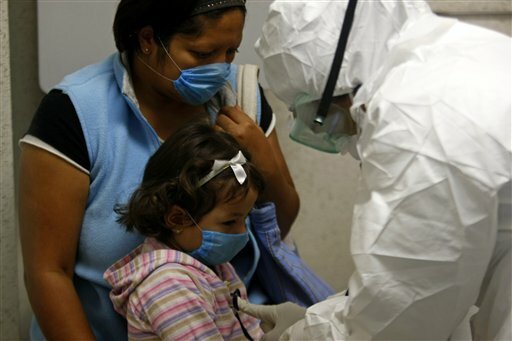Flu Cases Rise in U.S.; Mexico Reports More Deaths
WASHINGTON — The confirmed number of H1N1 influenza cases in the U.S. rose to 642 in 41 states, the Centers for Disease Control and Prevention said.
Meanwhile, health officials told U.S. lawmakers Wednesday it took only two weeks to identify the genetic characteristics of the H1N1 virus, and they are in good position to quickly produce a vaccine if the flu takes a turn for the worse.
Dennis Carroll, special adviser on pandemic flu to the U.S. Agency for International Development, noted that the 1918-1919 flu pandemic also began in the spring and was initially mild, but a much more lethal version hit six months later and the virus eventually killed 50 million world-wide.
Anne Schuchat, acting deputy director for science and program at the CDC, also urged caution, saying they expected to see more people get sick and more serious cases. One factor, she said, is that the Southern Hemisphere is now moving into its flu season. But she also stressed that “at no time in our history have we been more prepared to face this challenge.” So far there have been two deaths in Texas, both in patients with underlying health problems.
The World Health Organization said Wednesday that cases of the virus confirmed by laboratories now tally 1,658, including 30 deaths. And Mexico announced a jump in the confirmed death toll Wednesday to 42 after testing backlogged cases.
CDC has distributed H1N1 test kits to states, which should allow for faster confirmation of new H1N1 cases. Previously CDC and just a handful of states could confirm such cases.
Health officials have said H1N1 influenza illnesses have been similar to the seasonal flu, which hits about 30 million Americans annually and contributes to about 36,000 deaths.
The one exception is that most H1N1 cases have been reported in young people, with the majority of cases seen in those younger than 18. Very few cases have been reported in people older than 50. Like seasonal flu, most H1N1 illnesses have been fairly mild but are more severe in people with underlying health problems.
Anthony Fauci, director of the National Institute for Allergy and Infectious Diseases, said the CDC is currently at the stage of processing vaccine seed virus. If the need arises, they can coordinate with manufacturers on clinical trials, verifying the safety, efficacy and right dosages of the vaccine, and then move to mass production.
A woman living near the Mexican border in south Texas became the second person in the U.S. to die of the new strain of flu. Judy Trunnell, who was a U.S. citizen in her early 30s, had chronic health conditions, according to Texas authorities. She had been hospitalized for about three weeks, after falling ill around April 14. None of her immediate family is ill, they said. They declined to elaborate further.
In Mexico, dozens of nationals quarantined in China despite having no flu symptoms arrived home Wednesday on a government-chartered jet, some complaining of “humiliation and discrimination” by the Chinese. But as Mexicans emerged from their own five-day swine flu shutdown, the death toll rose and many remained fearful.
While the rate of new cases and hospitalizations has declined, epidemiologists said the virus has spread throughout Mexico. “We have seen a tendency (of the outbreak) to diminish, but not disappear,” Health Secretary Jose Angel Cordova said.
Elsewhere Wednesday, Swedish authorities confirmed the Scandinavian country’s first swine flu case — a woman who recently visited the U.S. The Swedish Institute for Infectious Disease Control said the woman, in her 50s, has recovered.
Comments
comments
 Calendar
Calendar

































